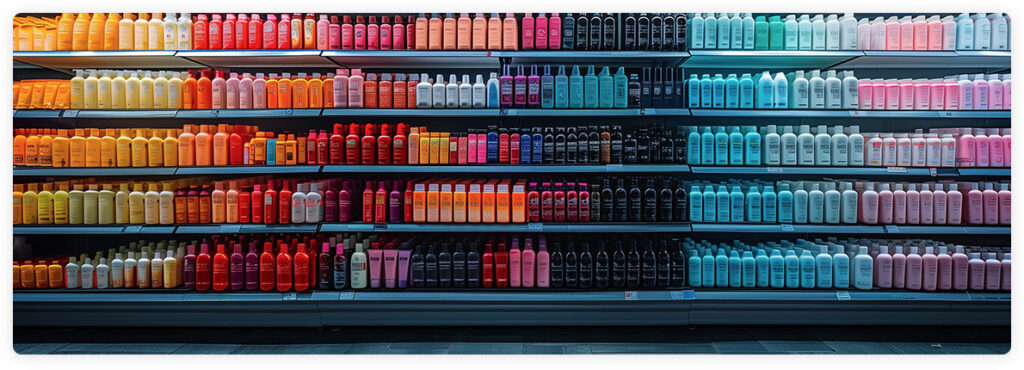Retail has arguably never been more challenging, with an ongoing cost of living crisis still impacting consumer behaviour, increased competition from cheap imports and increased costs from exporting, it’s more important than ever to ensure you stand out from your competitors.
Creating a unique and compelling presence in the crowded e-commerce landscape is crucial for success but defining your USPs (unique selling points) isn’t always straight forward, and conveying them to potential customers isn’t easy either.

Read on for some tips and inspiration to help you stand out from your competitors.
Captivating brand stories
Business owners sometimes wrongly believe that their story is boring, or even that they don’t have one, which is always wrong! Just because you think the reasons you opened your business are boring, that doesn’t mean your customers will.
Putting a human spin on a brand is important and not only does that help to build trust, reassuring potential customers that you’re running a legitimate business, but providing some backstory is a great way to help others relate to you and your brand.
Tips for creating your brand story
Think about the story behind your brand. Explain your mission, values, and the journey that led to the creation of your business, talk about where you find inspiration, any bumps encountered along the way and what drives you to do what you do.
Customers love connecting with brands, especially those that are passionate about what they do or that have a narrative they can relate to, and even if you think it’s boring, it’s better to share. A good depth of information and a brand story in addition to the standard ‘about us’ page, is far better than sticking to the standard, uninspiring couple of paragraphs covering just the bare essentials.
Defining and conveying your unique selling points
Clearly identify your Unique Selling Points (USPs) as these are the things that set you apart from the competition. Whether it’s superior quality, charity work, unbeatable prices, or exceptional customer service, make sure these USPs are prominently featured on your website and repeated in multiple areas.
Tips for conveying your USPs
Think about what you do differently, and consider what you do well and in particular what you do better than your competitors.
Don’t just tell people about it, demonstrate it by sharing testimonials and reviews from happy customers, sharing posts you’re tagged in on social media, shouting about industry awards, training, development or even by creating a service guarantee or pledge that you can stand by.
Invest in photography
Stock photography has a valuable place on ecommerce websites, but when it comes to showcasing your business and your products in the very best light, nothing beats the impact of well-shot product images, particularly lifestyles images that can provide an extremely effective way of connecting with your audience.
Images are often the first thing customers notice, so make sure they accurately represent your brand and show your products in the best possible and most inspiring way!

Tips for better photography
Use high-resolution images and videos to showcase your products, but don’t just rely on isolated product shots on a white background, although of course this kind of shot has its place, particularly if you want to list your products on Google Shopping.
Ideally, you’ll want to show your products from various different angles, including close-up details as well as showing products in a lifestyle setting being worn or used.
Don’t overlay your photographs with anything, for example ‘new’ or a price or anything else. If you want to do that, instead, find an app that allows you to add extra graphics programmatically as overlays.
Social proof matters
Social proof is a critical trust building factor for online retailers to consider and provides a quick indicator to customers as to how trustworthy your business is, which is particularly useful for first time shoppers. Social proof could mean the difference between a conversion and a bounced visit.
Tips for leveraging social proof
Showcase social proof, such as the number of satisfied customers, social media mentions, or influencers who endorse your products. You might want to include various Shopify apps that will show popups, slide in banners or a ticker on product pages stating how many people purchased that product in a given time period, or the last person who purchased that product.
You might also consider social media app integration allowing you to benefit from user generated content, but pulling in posts from people talking about your products for example.
Also consider integrating customer reviews and testimonials on your product pages. Positive feedback builds trust and credibility, helping potential customers feel confident in their purchasing decisions.
Personalise and reward the shopping experience
Implement personalisation features on your website wherever possible, but make sure features add real value and are helpful. For female shoppers in particular, clothing sizes are anything but standard and can vary hugely between different brands and even across different products from the same brand.
Some fashion websites however, make it easier to find the right size. An integrated website app urges customers to answer a few questions and then makes a prediction, based on garment sizing information and customer feedback on the fit of individual garments, as to which size is most likely to fit.
Adding additional layers of personalisation and helpfulness like this makes customers feel valued, understood and ultimately seeks to smooth out any potential pain points in the conversion process.
Tips to personalise the shopping experience
Think along similar lines and work out how you might personalise the shopping experience for your customers. Whether you provide a customer login that applies specific discounts or offers to individual shoppers, or you might want to consider personalising content or offers based on a customer’s vehicle, fitness preferences or pet for example.
Implement exclusive offers, discounts, or loyalty programs to reward repeat customers. This not only boosts customer retention but also attracts new customers looking for added value.
Referral apps like mention.me can be easily implemented and is a great way to encourage user generated content and positive word of mouth.
Engaging, helpful content
A blog provides the easiest way for brands to create engaging, relevant and helpful content for their customers. From sizing, fitting, set up and care guides through to trend reports, tips, advice and news about what’s new.
A blog provides the perfect opportunity to develop your brand tone of voice, providing content that will help engage existing customers (and social media followers) and attract new customers.
Perhaps the most compelling reason to create helpful content though, is the impact it has on SEO, with Google prizing helpful content above all.
Tips for creating helpful content
Think about pain points faced by your customers, as well as content that demonstrates your unique selling points along with anything vaguely interesting relating to your products. Share tips, stories, or industry insights that resonate with your target audience, and don’t forget to check Google Analytics to see how content like this performs, you might be surprised to find just how much traffic a humble blog post or guide can generate.
Helpful content not only adds value but also establishes your brand as an authority in your niche. Take a look at our detailed recent article on SEO and helpful content.
Consistent branding matters
Ensure consistent branding across all platforms – from your website to social media and packaging. A cohesive brand image looks more polished and professional, helping improve brand recall and reinforcing trust.
You can read more about the importance of consistent branding here.
Tips for more consistent branding
Ensure that your brand adheres to the same visual identity across all touch points. Audit your social media channels and ensure your logos, descriptions and content details are consistent. Ensure that wherever your business is listed, that the information is up to date and accurate and make sure your tone of voice doesn’t vary too much across social media platforms.
Understand and highlight your USPs
A Unique Selling Points, commonly known as USPs is the distinct messaging that helps to set your brand apart from competitors. At it’s very essence, these are the specific reasons why customers choose you over your competitors.
Your USPs can highlight any unique aspects of your business, from product design, ingredients/materials, production processes, brand values or your mission.
Tips to help you convey your USPs
The first step to defining your USPs is in understanding your Unique Value Proposition. At the core of your business A UVP focuses on communicating the value your business provides, so start by thinking about what benefits you provide your customers and why a customer should, and this gives you the basis of your value proposition.
This can further be expanded into the creation of your USPs, and benefits that a customer will gain from choosing a particular brand or product and often addresses the question, “Why should a customer choose us over others?”
Clearly define and communicate your Unique Value Proposition. What makes your products or services stand out? Highlight this prominently on your website to grab the attention of potential customers.